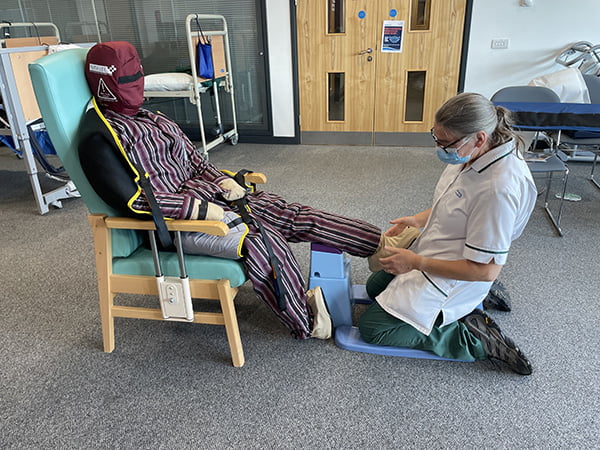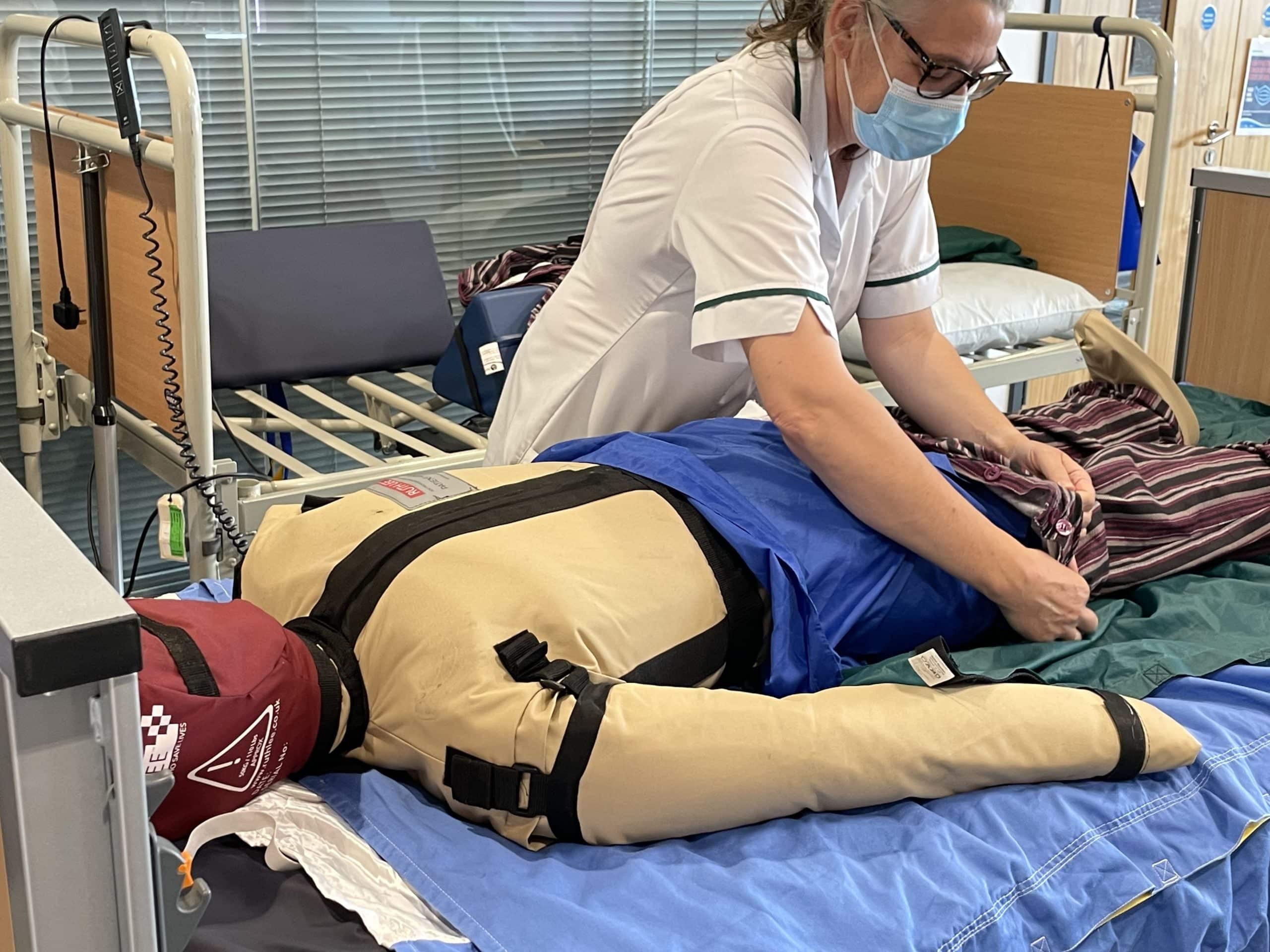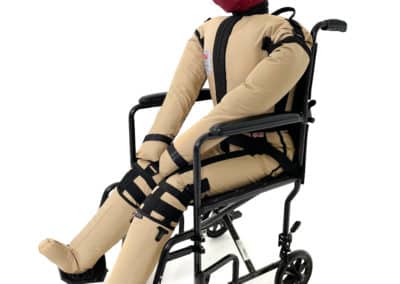No going back to using people in training sessions
The Coronavirus pandemic impacted the training techniques of safe patient handling. At the start of Covid restrictions, it became clear that using staff to play the role of the patient needed to be reviewed to comply with Government guidelines.
At Wirral Community Health and Care NHS Foundation Trust, the initial decision was to continue moving and handling training face to face, but with less staff and in larger room. Sessions were conducted by the demonstration of techniques, but it soon became clear that this was not as effective as hands-on training.
Moving and Handling Advisor from the Trust, Margaret (Marg) Huxley, saw discussions around the use of manikins for patient handling training on the NBE forum. After researching manikins and consulting with us, Marg purchased her first manikin to deliver moving and handling training.
Months later, after using Ruth Lee patient handling training manikins for all training sessions, Marg has no intention of making the manikins redundant post-covid! 195 staff in the Trust have been trained using a manikin, since March 2021.
Staff training using the Ruth Lee Patient Handling Manikin
Marg recently told us that using manikins, all community staff are now trained in how to move a patient around a bed: a basic roll, and movement up and down the bed. Staff are shown how to fit bed wedges to prevent falls, using the manikin to demonstrate the correct fitting of the wedges.
Staff are trained on how to insert a sling using a slide sheet, and how to hoist a patient from the bed and move them to a chair. Manikins have also been used when training with a HoverJack patient lift which has taught staff how to find faults, and what to do if there is a problem.
When asked if she will continue to use manikins long term, Marg said: “The positive impact they have had means I will definitely continue to use manikins in training; they have become an intrinsic part of the sessions. Some staff still like to know how it feels to be moved, so that experience will still be offered, but other staff are reluctant, so having a manikin for every session will be a huge benefit.”
Additional benefits of using a manikin for training
Once Marg understood the versatility of using a manikin in patient handling training, she started to apply the technique to other areas of care. A manikin is now used to demonstrate how to dress patients and how to use the Ergo-Kit which minimises the strain on nurses in scenarios such as applying dressings to legs, or when working on feet in podiatry.
Marg is currently looking at how to use a manikin to demonstrate positions for catheterising which obviously cannot be demonstrated on staff. The manikin is helping Marg to trial and test new ideas to prepare for real-life scenarios. She can practice lots of ideas quickly to determine what works without risking injury to a person.
The manikin has been used by practitioners in the Trust who may work with patients. Marg said she will be using a manikin for dental training to demonstrate how to move a patient in and out of the dental chair from the wheelchair using the hoist.
Development of the Ruth Lee Patient Handling manikin
Marg is one of three practitioners who have been instrumental in helping Ruth Lee to further develop the Ruth Lee Patient Handling manikin. Her input on the adaptations has been invaluable.
She specifically requested that Ruth Lee build in a weighted section to the bottom area to make the manikin sit better in a chair or hoist.
Other feedback identified that amputee patient handling is particularly difficult to train as staff obviously can’t be used, and the loss of limbs can significantly affect the dynamics of how a sling moves. The arms and legs are detachable and therefore possible to simulate an amputation. It also helps with making the manikin easier and lighter to move when setting up training or transporting between sites.
Velcro straps have been added at the wrists to allow trainers to keep the arms together and simultaneously strap one arm in a sling position during hoisting, or to hold onto the sling.
The Patient Handling manikin is now available in two weights, 30kg and 50kg. The 50kg manikin is considered ‘industry standard’ as it more accurately represents the weight of a human patient.
Free consultation
Ruth Lee manikins are not a one-size-fits-all solution. We would urge you to give us a call so that we can chat through your needs, without obligation. We are a friendly, knowledgeable team, committed to providing outstanding care. Please contact us on 01490 413282.
For more information call 01490 413282, or go to https://www.ruthlee.com/manikin/hospital-care. Ruth Lee, Lambert House, Glyndyfrdwy, Corwen, Denbighshire, Wales, LL21 9HW





